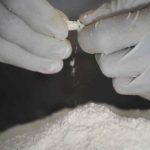Many Americans are living with silent liver damage — and most have no idea. This isn’t just a minor health glitch. It’s a slow-moving disaster that’s deeply entwined with insulin resistance, belly fat, and rising rates of Type 2 diabetes. What’s more alarming is that the standard screening tools used in primary care often miss it entirely, allowing the condition to worsen unchecked.
I’m currently in the process of publishing a scientific paper that takes a deep dive into liver health, and one thing has become clear: the real problem isn’t liver fat itself — it’s the scarring that follows. By the time symptoms like fatigue, abdominal swelling, or elevated liver enzymes show up, the damage is already well underway. This scarring, known as fibrosis, impacts your entire metabolic system, increasing your risk of cardiovascular disease, cognitive decline, and even cancer.
The liver isn’t just a passive filter for toxins — it’s a dynamic organ that governs how your body processes sugar, stores energy, and regulates inflammation. When it’s under constant assault from poor diet, excess fat, or environmental toxins, its ability to perform these functions starts to unravel. And because it’s a silent process, the warning signs are easy to miss until it’s too late.
If you’ve been struggling with weight around your midsection, unstable blood sugar, or chronic fatigue, your liver could already be in trouble, even if your doctor hasn’t flagged it yet. What follows is a closer look at newly published research that uncovers just how widespread liver damage really is, and what that means for your long-term health.
Advanced Liver Scarring Is Hiding in Plain Sight Among People with Diabetes
A study published in the Journal of Internal Medicine evaluated how common fatty liver disease is in adults with Type 2 diabetes receiving standard care.1 Researchers used MRI scans and liver stiffness measurements — noninvasive tools that detect fat deposits and signs of scarring — to assess 308 patients recruited through primary care.
The goal was to see how many of these patients had undiagnosed metabolic-associated fatty liver disease (MASLD) and whether they were at risk for more serious forms of liver damage like fibrosis.
• More than half had fatty liver, and nearly 1 in 10 showed signs of advanced liver damage — Of the total participants, 59% were found to have MASLD. Even more concerning, 7% already had signs of advanced fibrosis — scar tissue that forms after repeated liver injury that often progresses to cirrhosis. The majority of these individuals had no outward symptoms, and standard screening tools missed many of the cases that imaging tests picked up.
• Obesity significantly raised the odds of fibrosis in people with diabetes — The researchers found that individuals with obesity were eight times more likely to have advanced fibrosis than those without obesity. Even patients who were merely overweight, not obese, were at elevated risk for developing fatty liver, though the fibrosis risk wasn’t as high. This points to body weight as a powerful driver of hidden liver damage in the diabetic population.
• The damage doesn’t stop at the liver; heart function is also compromised — Using detailed heart scans, researchers discovered that patients with MASLD had subtle changes in heart structure and function, even without any history of heart disease.
These individuals showed signs of smaller left atrial volume and reduced cardiac output. In simple terms, their hearts were pumping less effectively, which suggests that fatty liver quietly impairs cardiovascular health before obvious symptoms appear.
• Insulin resistance and fat buildup create a feedback loop that worsens liver health — The researchers explained that excess fat in the liver increases insulin resistance, and that resistance then promotes more fat storage in the liver. This back-and-forth cycle leads to chronic inflammation and scarring. It’s a dangerous loop that’s often set in motion long before patients are diagnosed with fatty liver disease.
• Fat inside your liver disrupts normal blood flow and oxygen delivery — As triglycerides accumulate in liver cells, the organ becomes congested. This limits oxygen delivery and promotes the release of inflammatory proteins, which damage nearby tissue. Over time, your body responds by forming scar tissue, which hardens the liver and makes it less able to perform vital tasks like filtering toxins or regulating blood sugar.
Fatty Liver Alters Key Blood Markers in Half of People with Type 2 Diabetes
A related study published in the Journal of Pharmacy and Bioallied Sciences evaluated how common liver fat buildup is in adults with Type 2 diabetes using ultrasound screening tools.2 Researchers examined 100 patients to determine the presence of fatty liver and whether common lab results could help predict who was affected.
• Half the participants had fatty liver visible on ultrasound, along with key lab changes — Out of 100 patients, 50 were diagnosed with fatty liver using ultrasound imaging. Those with fatty liver had higher levels of liver enzymes, specifically alanine aminotransferase (ALT) and aspartate aminotransferase (AST), indicating liver stress or injury. Additionally, their fasting blood sugar and body mass index (BMI) were significantly higher, linking poor metabolic health with liver dysfunction.
• Patients with fatty liver had lower AST/ALT ratios, which signals worsening liver health — The AST/ALT ratio is a blood test comparison used to gauge the type and severity of liver stress. In this study, the average AST/ALT ratio was less than 1 in people with fatty liver, while those without liver fat had a ratio above 1. A low ratio is often linked to more advanced liver fat accumulation, and this finding supports using enzyme ratios as a red flag in diabetic patients.
• LDL cholesterol and triglycerides were also higher in people with fatty liver — Researchers found that patients with liver fat had elevated total cholesterol and LDL cholesterol, as well as significantly higher triglyceride levels. These markers point to dysfunctional fat metabolism and mirror the kind of metabolic breakdown seen in people with both diabetes and heart disease.
• The research confirms that standard diabetes labs alone aren’t enough — Even though liver enzymes were elevated, they weren’t high enough to automatically trigger alarm in many cases. This again suggests that fatty liver is likely being missed in everyday checkups unless imaging is used. The authors concluded that combining ultrasound with common blood tests offers a better way to screen for liver involvement in Type 2 diabetes.
• Fatty liver amplifies existing metabolic stress in diabetes — The paper emphasized how liver fat worsens the already fragile balance of blood sugar, cholesterol, and insulin regulation in people with diabetes. As your liver becomes overloaded, its ability to process fats and manage glucose declines, setting off a chain reaction of worsening metabolic disease.
Fatty Liver Feeds Insulin Resistance and Makes Diabetes Harder to Control
A review article published in Hepatobiliary Surgery and Nutrition outlined the two-way relationship between liver fat accumulation and insulin resistance in people with metabolic dysfunction.3 Instead of treating fatty liver as a side effect of diabetes, the authors described it as a key player that actively makes the condition worse.
• Insulin resistance floods your liver with fat, and your liver starts to store it — When your body becomes resistant to insulin, your fat cells release more free fatty acids into your bloodstream. Your liver pulls these fatty acids in and converts them into triglycerides. Over time, your liver becomes a dumping ground for excess fat, especially if you eat diet high in processed foods. This buildup overwhelms liver function and triggers inflammation.
• Liver fat further damages insulin signaling, creating a vicious cycle — Once your liver is full of fat, it doesn’t just sit quietly. It begins to produce inflammatory compounds and resists the effects of insulin itself. That means it continues pumping glucose into your bloodstream, even when insulin is trying to shut it down. Your blood sugar goes up, your pancreas works harder, and your insulin levels spike, all because your liver isn’t listening.
• This cycle worsens your overall metabolic health — Liver fat plays a direct role in raising triglycerides, lowering HDL (the “good” cholesterol), and increasing small, dense LDL particles — those most closely linked to heart disease. It also contributes to a condition called metabolic syndrome, which includes high blood pressure, poor glucose control, and belly fat, all of which raise your risk of stroke, heart attack, and kidney failure.
• Even thin people with fatty liver face serious risk — Fatty liver isn’t limited to those who are overweight. Lean individuals with insulin resistance and fatty liver experience the same or worse metabolic consequences, including higher cardiovascular risk. In these cases, the disease often flies under the radar because doctors don’t expect liver fat in thinner patients.
• Fat buildup in your liver slows detoxification and hormone balance — Your liver helps regulate more than blood sugar. It filters toxins, processes estrogen, and converts thyroid hormones into their active form. When liver cells are clogged with fat, these detox and hormone-balancing functions slow down. That leaves you feeling sluggish, foggy, or inflamed without knowing why.
Under normal conditions, the liver breaks down fat using a process called beta-oxidation. But in insulin-resistant states, this process becomes impaired. Your liver starts accumulating toxic fat intermediates like diacylglycerols, which activate damaging enzyme systems that make insulin resistance even worse. It’s a biochemical spiral that becomes harder to reverse the longer it’s allowed to progress.
Fatty Liver Disease Makes Diabetes Harder to Treat and Easier to Miss
A report from the University of Florida’s Diabetes Institute explained how fat buildup in your liver worsens insulin resistance and makes diabetes more difficult to manage.4 The overview focused on the growing overlap between Type 2 diabetes and MAFLD and highlighted the lack of awareness among both patients and health professionals.
• Most patients with fatty liver don’t know they have it — until it causes serious problems — According to the Institute, fatty liver is present in up to 80% of people with Type 2 diabetes, but it often goes undetected until irreversible damage has occurred. Because liver fat rarely causes pain or immediate symptoms, it’s missed during routine checkups.
• Ignoring liver health leaves you more vulnerable to heart disease and kidney failure — The Institute emphasized that fatty liver isn’t just a liver problem — it’s a full-body threat. Liver fat drives inflammation that damages blood vessels and worsens high blood pressure, two key risk factors for heart attack and stroke. It also interferes with kidney function and raises your risk for chronic kidney disease, another common complication in long-term diabetes.
• Doctors are missing opportunities to screen for liver disease early — Most diabetes care plans don’t include liver imaging or advanced diagnostics unless liver enzymes are elevated, which misses many early cases. The Institute encouraged providers to use more accurate screening tools, like MRI, in people with diabetes, especially if they also have obesity or high triglycerides.
How to Stop Liver Damage from Progressing and Regain Metabolic Control
If you’re dealing with insulin resistance, high triglycerides, or stubborn belly fat, your liver is likely already under strain, even if your labs still look “normal.” To stop the damage from getting worse and start reversing course, you need to take pressure off your liver and restore its ability to clear fat, manage glucose, and protect your body from inflammation.
These five steps focus on what’s driving liver dysfunction at the root, so you’re not just managing symptoms but actually healing what’s underneath it all.
1. Cut out vegetable oils and alcohol immediately — If you’re eating packaged foods made with soybean oil, canola, corn oil, sunflower oil, or anything labeled “vegetable oil,” your liver is under constant assault. These oils are loaded with linoleic acid (LA), a harmful fat that promotes fat buildup in your liver and generates oxidative stress. Your body turns them into OXLAMs — highly reactive molecules that damage mitochondria and disrupt energy production.
Alcohol is just as damaging. It’s broken down into acetaldehyde, another reactive aldehyde that injures your liver at the cellular level. If you already have signs of fatty liver or insulin resistance, removing both vegetable oils and alcohol gives your liver the best shot at recovery. Use grass fed butter, tallow, ghee, or coconut oil for cooking instead.
2. Add choline-rich foods to help your liver move fat out — Choline is required for your liver to package up fat and send it out of your body. Without it, fat just piles up inside liver cells. If you’re not eating foods like pastured egg yolks or grass fed beef liver regularly, you’re likely not getting enough choline to keep things moving. Think of choline as traffic control for your liver — without it, everything jams up, and damage begins.
3. Consider a choline supplement if your diet falls short — If you avoid eggs or meat, it’s nearly impossible to meet your choline needs through food alone. In that case, a supplement isn’t optional — it’s required. One effective form is citicoline.
At doses between 500 milligrams (mg) and 2,500 mg per day, citicoline not only helps your liver export fats but also supports brain function by boosting acetylcholine, a neurotransmitter linked to memory and focus. If you’re dealing with brain fog, fatigue, or signs of liver dysfunction, this is a smart addition.
4. Get your body moving and shrink your waistline — You don’t need to hit the gym or train for a marathon. Just take a 10- to 20-minute brisk walk after meals, stretch daily, and add in strength training or bodyweight workouts a couple times a week.
These simple movements help lower insulin and keep your liver flushed with oxygen-rich blood. If your waist measures more than 40 inches for men or 35 inches for women, it’s a red flag — visceral fat at that level is strongly linked to liver scarring. Focus on dropping inches, not just pounds.
5. Prioritize restorative sleep to lower inflammation — If you’re constantly exhausted or sleeping poorly, your liver doesn’t get the downtime it needs to regenerate. Aim for quality sleep in a cool, dark room. Avoid eating within three hours of bedtime to prevent late-night blood sugar spikes. Even small improvements in your sleep help reduce liver inflammation and improve insulin sensitivity over time.
FAQs About Fatty Liver and Type 2 Diabetes
Q: How common is fatty liver disease in people with Type 2 diabetes?
A: Fatty liver disease is extremely common in people with Type 2 diabetes. Research shows that up to 59% of diabetes patients have MASLD, even when no symptoms are present. Alarmingly, 7% already have advanced liver scarring — and most don’t know it.5
Q: Why do vegetable oils and alcohol harm your liver so much?
A: Vegetable oils like soybean, corn, and canola are high in LA, a fat that turns into toxic byproducts called OXLAMs in your body. These damage your liver’s mitochondria and fuel inflammation.
Alcohol is broken down into acetaldehyde, another toxic aldehyde. Both overwhelm your liver’s ability to detoxify and repair itself, leading to scarring and poor metabolic health. Cutting both out is one of the most effective ways to stop further damage.
Q: What signs should I watch for if I think my liver is in trouble?
A: Fatty liver disease is called “silent” for a reason — you often don’t feel anything until serious damage is done. However, warning signs include persistent fatigue, belly weight gain, high triglycerides, elevated blood sugar, or mildly raised liver enzymes. Waist size is also a clue: more than 40 inches in men or 35 in women suggests visceral fat buildup, which is closely tied to liver scarring.
Q: What foods help clear fat from my liver?
A: Choline-rich foods like pastured egg yolks and grass fed beef liver help your liver export excess fat. Without enough choline, fat builds up inside liver cells, leading to inflammation and fibrosis. If your diet lacks these foods, a choline supplement like citicoline — at doses of 500 to 2,500 mg daily — supports liver detox and brain function.
Q: How is fatty liver connected to other health problems like heart disease or brain fog?
A: Liver fat doesn’t just stay in your liver. It drives insulin resistance, disrupts blood sugar control, and promotes inflammation throughout your body. This ripple effect raises your risk for heart disease, cognitive decline, and kidney dysfunction — even if you don’t have obvious liver symptoms.







